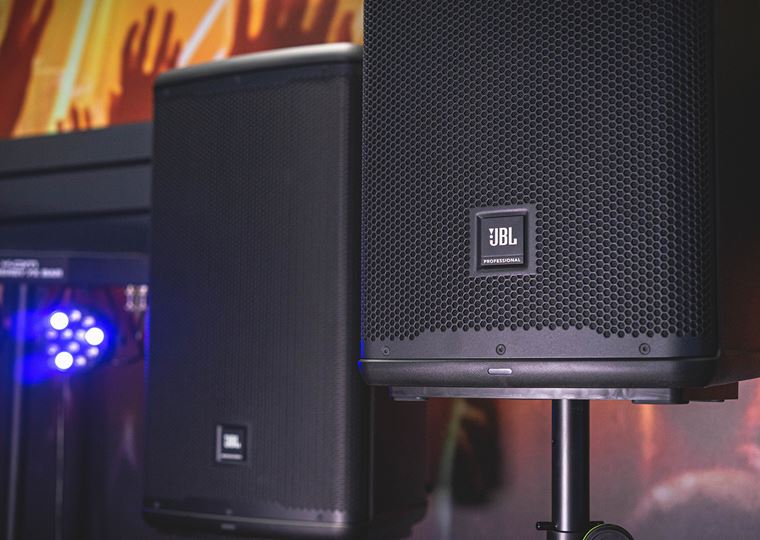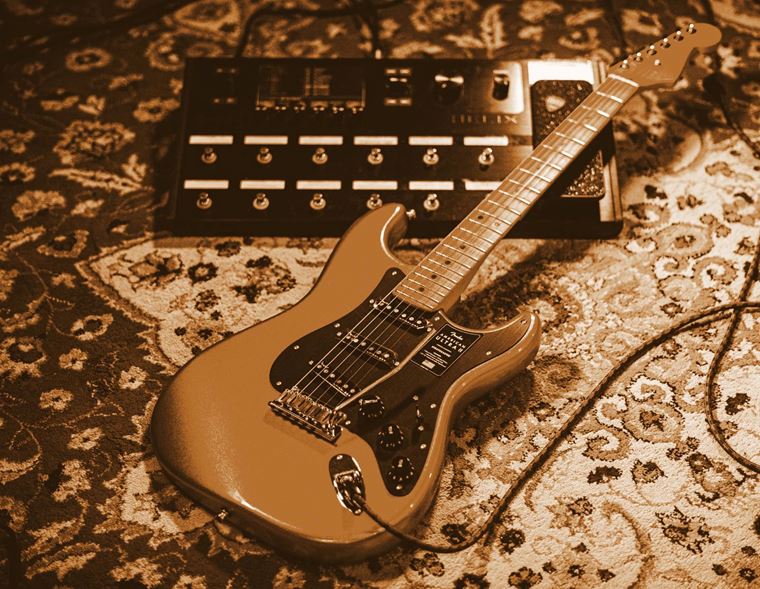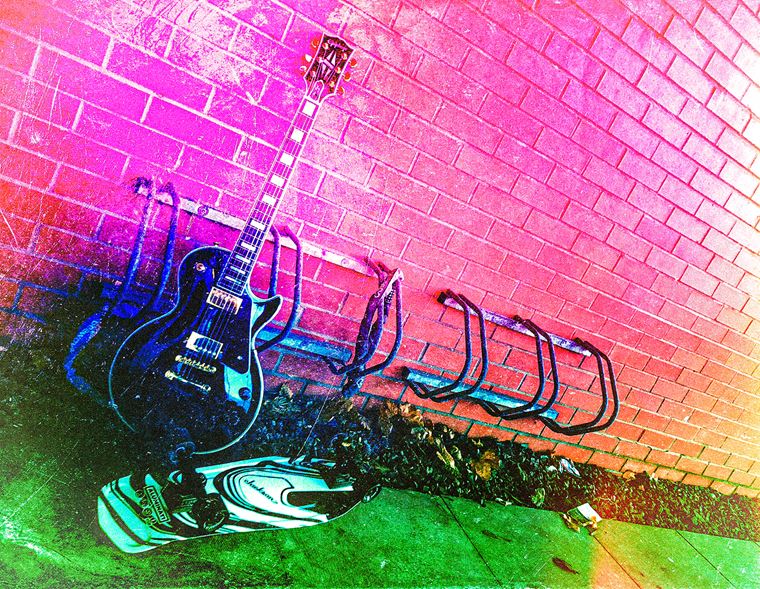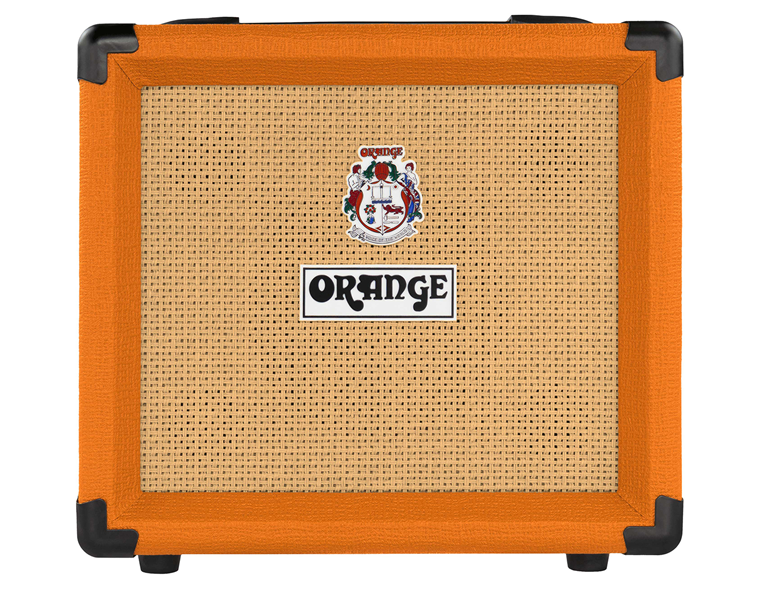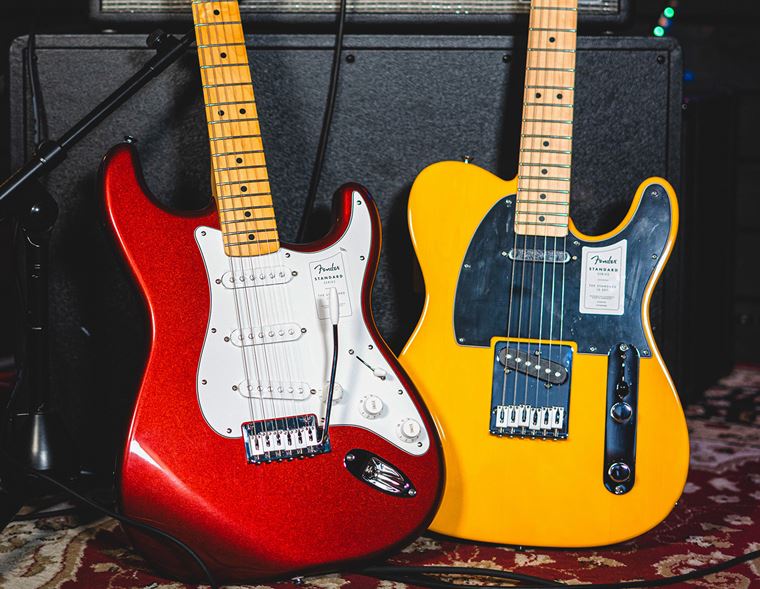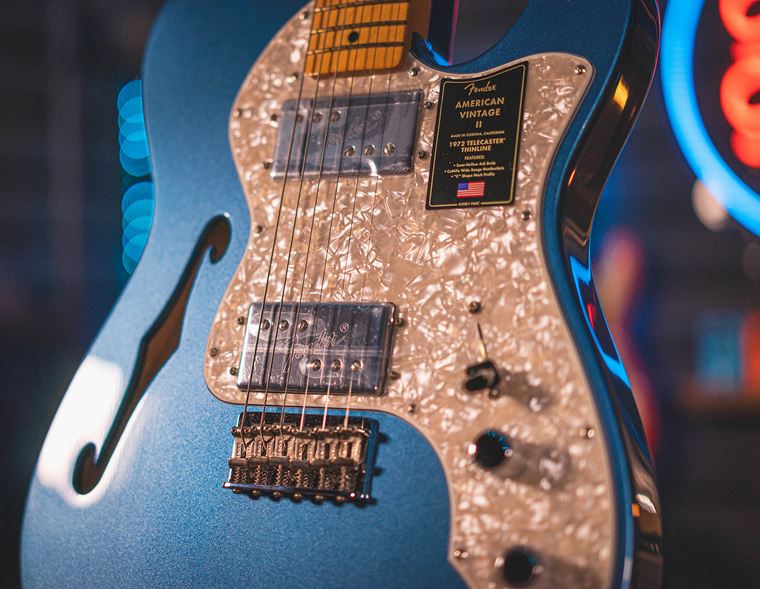The Best Guitar Effects Pedals from Every Category
Published on 05 April 2023
Today we’re introducing you to the brilliant world of guitar effects pedals!
Let’s face it, as a beginner or even as someone who hasn’t touched on guitar pedals before, it can be really daunting to simply pick a pedal online and hope that it suits you. The goal of this blog is to help you understand what exactly each pedal does, as well as give you our top pick from each guitar effects pedal category!
Contents
- Overdrive
- Distortion
- Fuzz
- Reverb
- Delay
- Pitch Shifter
- Multi FX
- Phaser
- Chorus
- Flanger
- Wah
- Tremolo
- Boost
- Compressor
- Looper
- Volume / Expression
- Switching Selector
- Equalizer
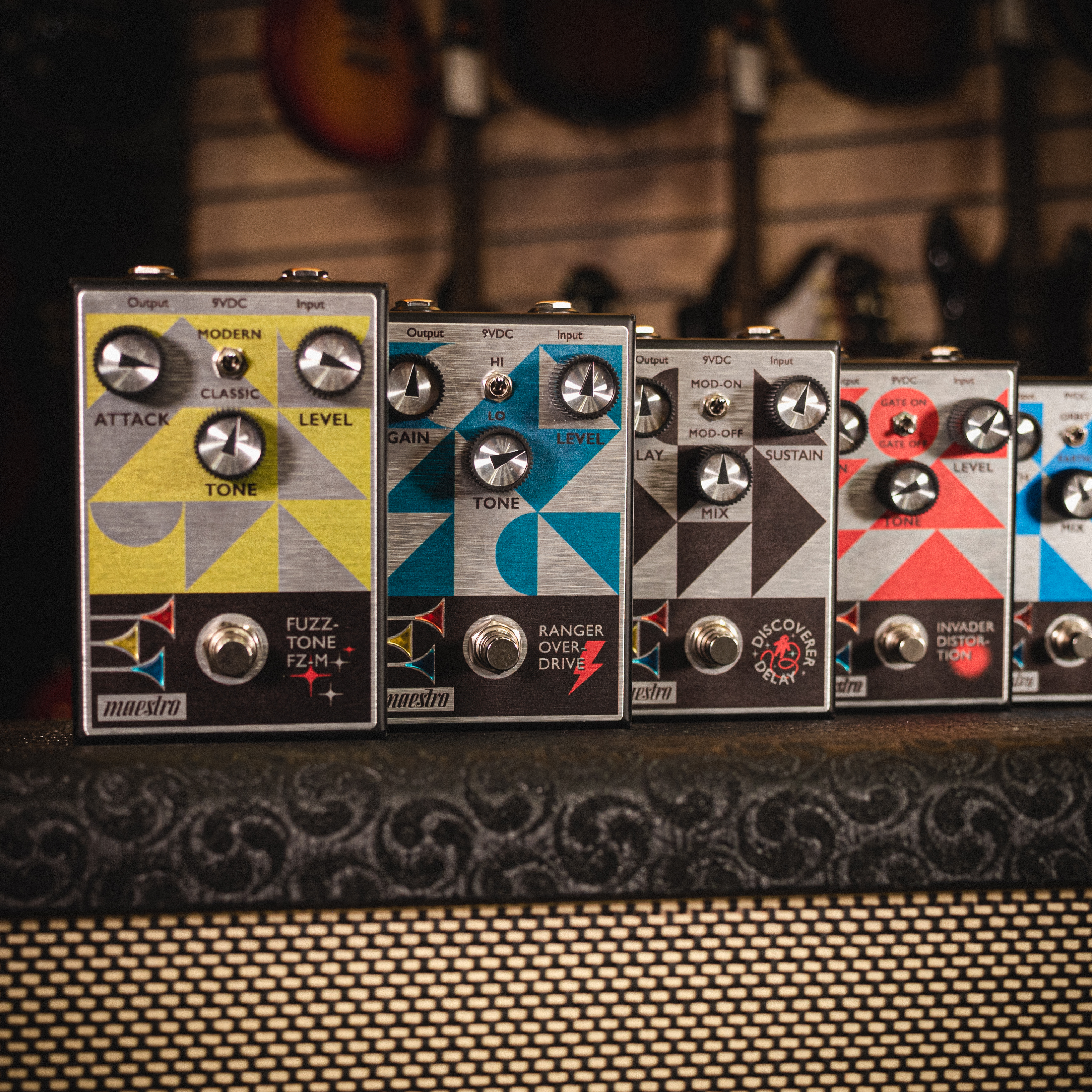
Distortion Pedals
It’s easy enough to simply describe distortion as a sound being “distorted”, but what actually is distortion?
Distortion is that gritty, dirty, high-gain sound that you hear in a variety of guitar music, most notably, but not exclusive to genres such as metal and rock. Distortion effects pedals mimic the sound of a tube amp being pushed to its maximum volume, giving it that crunchy “overdriven” sound. Of the three main types of guitar distortion pedals, you’ll find that the difference in each depends on what exactly you’re looking for in terms of sound and style.
What Are the Three Types of Distortion Pedal?
1. Overdrive
Overdrive is one of the more versatile distortion effects, whether you’re after a light gain or a whole lot of grit in your sound.
If you’re looking for a pedal that will contribute some necessary grit to your tone without being overbearing, we’d recommend a low-mid overdrive such as the Ibanez Tube Screamer Mini - a compact take on one of the most popular overdrives available. Despite its size, the TSMINI packs a punch that you’d expect from your classic TS-9 Tube Screamer, all thanks to the chip responsible for that legendary tone! If you’re looking to kick your sound up a notch from your clean tone but still cut through with amazing clarity, the TSMINI is for you!
The Tube Screamer has also been used famously in front of high-gain sounds by turning the gain off and kicking the volume and tone knobs on full to tighten up your tone! Overdrive can be heard in almost every genre and is a staple effect used in almost every style, and the Tube Screamer has been used by so many iconic guitar players throughout history. Gary Moore, Kirk Hammet, Rory Gallagher, and Steve Vai have all taken the TS and used it to create the most tasteful of tones. A great example of the Tube Screamer in action is in Stevie Ray Vaughan’s “Tightrope”, definitely worth checking out to fill that blues rock-shaped hole in your heart!
2. Distortion
If you’re confused, we’ll start by mentioning that whilst the term distortion is an umbrella term for the other pedals in this category, it also is a guitar effects pedal in itself!
Distortion is ideal if you’re after a more aggressive tone for the likes of punk and metal but the effect has been used in many other genres!
To show exactly how distortion sounds, throw on Nirvana’s “Smells Like Teen Spirit” and listen to Kurt Cobain’s crunchy tone turn into absolute mayhem in the chorus of the song. That dirty sound you’re hearing is Kurt turning on his Boss DS-1, a key component in Kurt’s guitar tone throughout Nirvana’s “Nevermind”.
On that note, our top pick for distortion as a guitar effects pedal is none other than the Boss DS-1. This pedal was released in 1978 and very quickly became a favourite of many guitarists and continues to be used as a main tool for driving solos, high-cutting rhythm guitar, or even as a low gain boost to this day!
3. Fuzz
Fuzz was the first distortion effect to be made available on the market. Though other forms of distortion became available soon after, the fuzz effect was still widely sought after as guitarists loved the chunky, full-faced energy that fuzz brings to your tone!
Your go-to fuzz should depend on what kind of sound you’re going after. Despite being one of the more recognizable guitar effects pedals, fuzz covers a whole variety of sounds. In 1962, Maestro released the guitar market's first-ever distortion pedal, the Maestro FZ-1 Fuzz-Tone. This caught the attention of many guitarists, most notably: Keith Richards, who famously used the Maestro FZ-1 Fuzz Tone throughout the Rolling Stones’ hit single “[I Can’t Get No] Satisfaction”.
For fans of that nasally, vintage, fuzz tone, we recommend Maestro’s faithful remake of their original FZ-1, the Maestro Fuzz Tone FZ-M. This stompbox captures the very sound that started it all but also features a switch to pick between modern and vintage sounds, for those looking to explore a variety of fuzz sounds in their setup.
Whilst the Maestro is a fantastic choice for fans of a lesser saturated fuzz tone, it would be wrong of us not to give an alternative for those Siamese Dreamers out there! In comparison to the FZ-M, the Big Muff is almost an entirely different pedal in terms of what it offers to the player. Creating a huge ambient wave of sustained energy, famously heard in The Smashing Pumpkins' iconic album “Siamese Dream”.
Billy Corgan’s use of a vintage op-amp which was used on Siamese Dream saw a modern remake of this pedal released by Electro-Harmonix. The Electro Harmonix Op-Amp Big Muff Pi Fuzz is a perfect choice for those looking to perfect that massive Cherub Rock tone, taking the classic big muff sound and adding that extra crunch, ideal for those looking to create the biggest wall-of-sound imaginable! The op-amp feature means that the pedal uses op-amps rather than transistors, and the main difference between this and the classic big muff is that the op-amp PI muff uses 3-gain stages instead of 4.
Other Types of Guitar Effects Pedals
1. Reverb
It wouldn’t be a blog post about pedals without mentioning an all-time great… and that’s exactly what we’ve got in store for our pick of a Reverb pedal that’ll just knock your socks off!
The Strymon Blue Sky is more than just your standard reverb, it is THE reverb pedal. This blue box of ambiance packs enough variety that even the shoegazers will be satisfied with its quality. The variety that the Blue Sky offers in comparison to the available reverb options 20 to 30 years ago is outstanding. With 3 types of reverb options: spring, plate, and room, you can be confident in covering a variety of sounds. Alongside this, you’ve got a shimmer knob which opens up more opportunities for tonal exploration, perfect for those looking for a vastly atmospheric sound!
If you’re looking for a reverb pedal that can handle just about any genre you throw at it, the Strymon blue sky is the top choice. Pedal heads will love its stellar selection of sounds, midi options, and inputs for expression pedals. And let us tell you that you don’t need to be a master soundscaper to figure this pedal out: every choice and selection can be had from just a few turns of the controls. There are no screens and submenus to slow you down! The Strymon Bluesky gives you an obscene amount of reverb processing in a simple, unassuming little box.
2. Delay
When it comes down to delay, you may have a specific sound in mind. There are a number of different types of delays available, but the two most common delay types that you’ll come across are digital and analog. Both digital and analog delays work by repeating the guitar’s signal, however, they both degrade slightly differently. Analog works by decaying naturally which means it will sound slightly different on each repeat, with digital delay you can expect the delay to degrade however it will sound the same on each repeat! For an incredible example of how delay can be used, we recommend listening to Rob Scallon’s “Rain”.
For an analog delay, we recommend the MXR Carbon Copy Analog Delay M169. Whether you’re chasing the atmospheric delay of David Gilmour or simply looking for a bit of slapback to help keep your tone sounding fresh: the MXR Carbon Copy has something for everyone looking for a stunning analog sound!
As for digital delay, The BOSS DD-3T is a fantastic pick for those looking for an outstanding delay pedal that’s seen the pedalboards of so many legendary guitarists. Based on the DD-2, the world's first digital delay pedal which was released in 1983. The DD-3T offers an excellent tap tempo feature, allowing you to get the exact delay you’re looking for! Alongside this, the DD-3T comes with the hold function that allows you to record a loop up to 800m/s long. If this seems familiar, that’s because it’s based on the original DD-2, in which the hold function inspired the BOSS Loop Station which came after!
3. Pitch Shifter
For fans of drop tunings that also don’t want to waste time tuning down on stage, a pitch shifter may just be your next go-to pedal! Pitch Shifter pedals cover a lot of area in terms of sound, but the main use of this pedal is to allow you to change the key of your playing with ease, by moving your note either up or down the scale. A great example of how a pitch shifter is used can be seen with bands like Royal Blood creating a guitar sound by pitch shifting a bass guitar an octave higher!
The Digitech Whammy DT Pitch Shifter has stretched to the breadth of the guitar community with artists such as Billy Corgan, Steve Vai, Radiohead, and Audioslave using them during their careers! That’s why it’d be truly amiss to not include this iconic pedal in the category of best pitch shifter! The Whammy gives you the ability to control your pedal with the treadle of the Whammy DT, meaning you can explore a range of sounds whilst you play!
4. Multi FX
Sometimes you want the most variety for the best value, and that’s exactly why the popularity of Multi-FX pedals has skyrocketed over the last few years. With the Line-6 HX Stomp, you can get ANY guitar effects pedal you may need all within a small stomp box. This multi-fx has become THE standard choice for many guitarists looking for a simple setup, and with frequent updates to make each tone as authentic as their counterparts: it’s a must-have for those looking for the best setup with limited space! Line 6 has built an almost cult following with their flagship Helix Floor unit, so for a fraction of the size and the exact same selection of sounds, the Helix HX Effects is a no-brainer!
5. Phaser
If you’ve ever listened to Eddie Van Halen’s “Eruption”, you’ll have heard a phaser pedal pedal: debatably one of the most famous examples of its use! The phaser effect works by cutting off the top end of the guitar’s signal and modulating the cut-off frequencies to give the impression of a moving tone control knob on a small part of your guitar signal.
To continue on with the topic of a great two-for-one deal, the MXR Phase 95 combines both of MXR’s most popular phaser pedals: The classic four-stage (meaning four separate stages of the phase being reversed) Phase 90 and its successor, the Phase 45. Pick between two of the best phaser tones ever made and control the feedback of your effect with the “Script” toggle switch, allowing you to get a pronounced sweep when on and a lusher, more subdued sound when off.
6. Chorus
A chorus pedal pedal is an effect that has solidified itself in the guitar community since the early 70s. The effect is created by the guitarist's signal being resampled and delayed very slightly to create the impression of multiple instruments being played, or a “chorus” of guitars if you will. A great example of this effect in action is in Nirvana’s “Come as You Are”, where the chorus can be heard all throughout the main riff and is incredibly important to the overall vibe of the song!
The Boss CE-2W is ideal for those looking to experiment with sounds ranging from the classic and famous CE-1 Chorus pedal, as well as a more modern effect with improved depth and dimension. Two modes, one pedal, endless possibilities, and a whole lot of atmosphere to be created here with the CE-2W. For fans of the respected Roland Jazz Chorus-120, mode 1 features a sound very similar to the chorus effect found in this amplifier!
7. Flanger
As the cousin effect of the chorus effect, Flanger duplicates your output with one note being played slightly slower then modulating the pitch to create the flanger effect we all know and love! Used by some of the greatest guitarists of all time, including Billy Corgan, Robert Smith, and even Eddie Van Halen.
Flanger can be game-changing in creating a uniquely beautiful sound in your guitar tone! To get the most out of this guitar effect, we have chosen BOSS BF-3 Flanger as our top pick for this category. The BOSS BF-3 Flanger has four modes available, giving a great deal of versatility:
Normal - Giving the authentic flanger effect you know and love Ultra - Higher intensity and ideal for those looking to add a dramatic sound to their playing.
Gate/Pan - Adds a tremolo-esque effect on top of the flanger, giving it an incredible shifting-pulse sound (Sci-Fi Fans will love this one!)
MOMENTARY - Turn the flanger effect on for however long your foot is holding down the footswitch, ideal for adding accents of flanger within your playing without having to switch the pedal on and off!
8. Wah
Whilst not all of us are trying to be Hendrix, a wah pedal is something that every guitarist should own at one point in their lives. The history of the Wah is definitely an interesting one, to start with - it was created completely by accident! Vox engineer, Brad Plunkett was playing about with a Vox Super Beatle amp’s tone controls and accidentally created a “wah wah” sound. Del Casher, the guitarist in the studio at the time, had always imagined this sound being played on guitar but never knew how to create it. Soon after, the two removed the circuit board from the amplifier and put it into a Vox continental organ volume pedal to create the foundation of the wah pedal! If you’re looking for a great example of how a wah pedal sounds, we’d recommend taking a listen to Voodoo Child (The Return) by Jimi Hendrix, or if you’d like a deep dive into the world of wah pedal songs, check out our blog on the best wah pedal songs!
Our recommendation for a quality wah pedal is without a doubt, the Dunlop Cry Baby Wah GCB95: There’s not much we can say except it certainly deserves its reputation. The Cry Baby has a heavy die-cast construction making it super reliable even after years on the road! The wah pedal has often been used as a front for creativity in experimental playstyles, with guitarists such as Tom Morello using his Dunlop Crybaby Wah to emphasise his DJ-scratch style solos!
9. Tremolo
Tremolo gets its sound from the volume signal being rhythmically changed which creates an intensity to your playing. First built into vintage amps and considered the very first guitar effect made specifically for electric guitars, tremolo quickly became a favourite amongst rock and roll guitarists, which later transitioned into a popular pedal used within the surf rock genre in the mid-60s. Gimme Shelter by The Rolling Stones is a great example of how the tremolo effect can be used, listen to how the effect changes the rhythm of Keith’s guitar playing during the intro.
To keep it classic for those that love those styles of music, the Maestro Mariner Tremolo Pedal is our top pick for a tremolo pedal that carries your sound wherever you need it to be. Whether it’s a sharper-edged modulation or just touching on the effect with supreme subtlety, it’s all available within its classic mode. The Mariner Tremolo’s harmonic mode replicates the built-in tremolo effects of some select vintage amplifiers, whilst allowing you to change the waveform of your sound with the available Speed, Depth, and Shape knobs!
10. Boost
Sometimes all you need is a little bit more volume to get that solo to really blow people off their feet, it’s that easy. So why make choosing the right boost pedal pedal more complicated than it has to be? It’s important to clarify as well that a boost is not an overdrive. Whilst you can use overdrive pedals as boost pedals, a typical boost pedal only adds a slight amount of volume to boost your signal when you need it most.
That’s why our choice of boost pedal is the MXR Micro Amp M133 Boost, perfect for those who love a whole lotta sound paired with supreme simplicity. Sporting a simple gain knob and footswitch, the MXR M133 Boost will make you stand out during your shining moment on stage, whether it’s a fiery solo or simply just an extra push for your last song of the set!
11. Compressor
By a simple description, a compressor allows your dynamic playing to sound more even and consistent, making your quiets louder, and your louds quieter. A good compressor will smooth out your arpeggios and picked parts whilst never overtly colouring your tone. When used correctly, a quality compressor is a massively effective device for achieving the clean, crisp, and even tone that you always wanted!
For that reason, we’d recommend the Keeley Compressor Plus, which is a perfect choice for those who are looking for a brilliant compressor that’s reasonably priced as well. Keeley have truly earned their reputation as one of the biggest and best guitar pedal builders in the world, covering over 90 different types of effect pedals as well as making custom modifications of the world's most famous pedals. Today, the Keeley compressor is one of their most popular pedals, with over 27,000 being sold worldwide! The Keeley Compressor Plus has a built-in switch that allows you to choose between how the pedal reacts to either single-coil or humbucking pickups, without affecting the pickup’s tonal characteristics. Our favourite feature on this pedal is the blend knob which allows you to distinguish between manipulating the sustain and the peaks of each note.
12. Looper
We all love a looper pedal. Not only is it great for practising, but the live opportunities are endless! Artists such as Tash Sultana and Ed Sheeran have built their entire careers using loopers in their live setups. Using a looper allows you to get the most out of your solo guitar playing, with opportunities to get extra creative with how you play. A great example of this is layering chords over muted strums to create a percussive sound and then building upon the rest of your track from there!
Our recommendation for a looper is the BOSS RC-5. This looper is really easy to use - with play, pause, undo, redo, and overdubbing all available from the footswitch. The RC-5 features up to 13 hours of stereo recording, as well as having over 50 drum rhythms available too, making this the perfect choice for the guitarist looking to jam and create ideas without a drummer available!
13. Volume / Expression
Expression and Volume tend to go hand in hand in the category of effects pedals but to give a description of both, volume simply controls the amount of volume your amplifier is outputting, and expression can control a variety of effects that require a continuous control footswitch, a prime example being a wah pedal.
For the guitarist looking for a hands-free solution to feed their love for dynamic playing, the Dunlop DVP4 Volume X Mini is our top choice for a volume pedal that gives you the smoothest of volume transitions whilst also remaining durable for years of playing! As an added bonus, this pedal also doubles as an expression pedal, giving you a whole lot of use in one compact pedal!
14. Switching Selector
A switch selector may not seem like a first choice for a guitarist when picking up their first set of pedals. However, these useful footswitches can completely reinvent how your tone is perceived! With the Morley Gold Series ABC Selector Combiner Pedal, you are able to route up anything from multiple amps, pedals, or instruments and assign each of them to a footswitch. This means that you can seamlessly switch between amplifiers and groups of pedals with the push of a button, it’s also ideal for those who may require quick instrument changes during shows, just simply have your other instrument plugged in and switch over to that channel when you’re ready!
15. Equalizer
Whilst you may think your EQ is only something that is in the control of the sound engineer at your local studio or venue, you’d be amazed at what you can do with a simple EQ pedal in your setup. To be concise, an EQ pedal allows you to boost or cut specific frequencies in your sound, for example: cutting the bottom end of a Les Paul or boosting the lower mids end of a Stratocaster. With the BOSS GE-7 Equalizer, getting precise with your sound has never been easier, and if you’re looking for some inspiration, check out this helpful tip from our expert team taken from the BOSS GE-7 Equalizer’s product page:
“Dial in your biggest, heaviest, crunchiest setting on your amp and then use the EQ pedal to dial back everything (whether it's all flat or whether you drop out some low end) lower and keep it switched on for most of your song, only turning it off to unleash the full volley of your amp's natural drive and size! It's backward to how EQs are normally used but it can be devastatingly effective!”
Final Thoughts
We’ll round this lengthy piece off with a piece of advice: it’s important to experiment with sounds to truly understand what you want to go for in terms of your guitar tone. Whilst we have given you the essentials of every category, we definitely encourage you to try out other pedals if you think they’ll suit your needs better. After all, it’s all about personal preference and we’re here to give you the best advice when you need it! Check out our full range of guitar effects pedals via the link below or visit one of our fantastic stores located around the UK and try one out for yourself. If you’re after more advice on a specific tone, pedal, or effect, our knowledgeable staff are more than happy to help both online and in-store!




